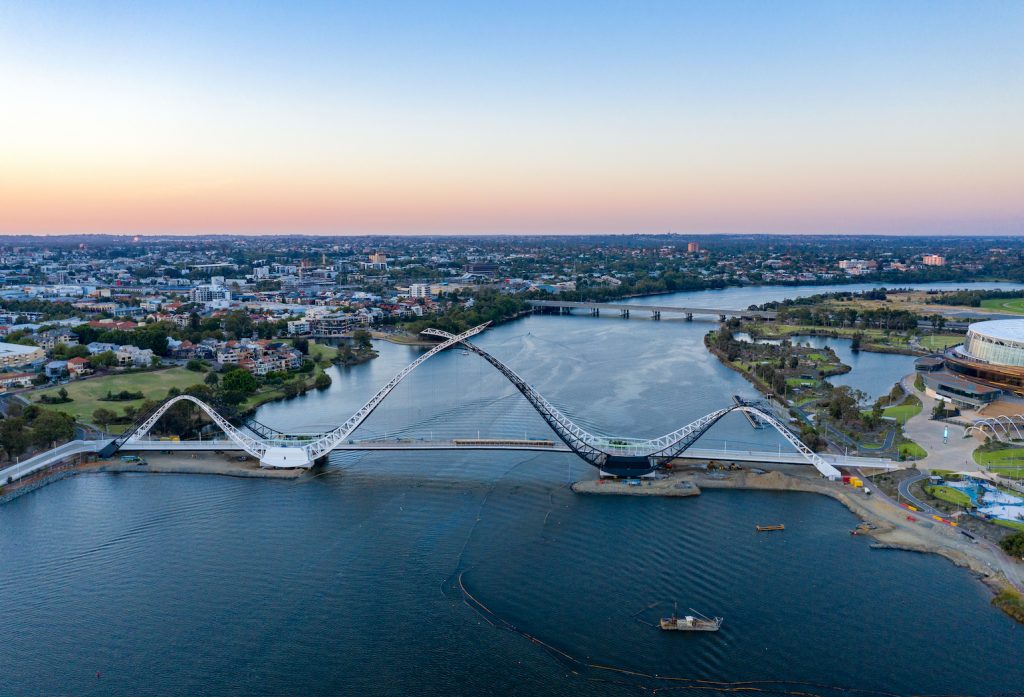From the bushfire Black Summer of 2019–2020 to the recent catastrophic floods in New South Wales, extreme climate events are growing in frequency and intensity.
Be it rail tracks warped by fire, bridges washed away by floods or electricity grids collapsing under the pressure of extreme heat, the consequences for infrastructure are enormous and immediate.
On 28 April at noon AEST, the University of Melbourne will host Building Climate Resilient Infrastructure, a free webinar featuring voices from government, academia and industry; click here to register.
Panelists include Mark Allan, Acting Director City Design for the City of Melbourne, Joan Ko, a sustainability leader at Arup, and Dr Keith Clifford Bell, an international development consultant who recently concluded 18 years of leading development and humanitarian engineering programs at the World Bank.
“We’re challenging the panel to build a better understanding of the strategic pathways into design, what we need to design, and how we should provide this to minimise effort and maximise return,” said Professor Abbas Rajabifard.
A former chair of the academic network of the United Nations Committee of Experts on Global Geospatial Information Management and Program Leader for the University’s Infrastructure platform, Rajabifard will lead the panel.
Resilience in the face of climate change
Bell has deep insights into natural disasters and what resilience looks like, gained from his career that includes reconstruction in Aceh, Indonesia, after the 2004 Indian Ocean tsunami and in Tacloban, Philippines, after 2013’s Typhoon Haiyan.
“I like to link sustainability and resilience,” he said. “Because sustainable systems and sustainable communities also have resilience built into them. If they don’t, it’s not sustainable.”
Yet resilience for infrastructure is not a simple issue. Dams, for example, are typically designed with a 100-year lifespan and there remains huge uncertainty not only about the impacts of climate change but the nature of human response to it over that time period.
“We often talk about one in 100 year events being severe flood conditions,” Bell said. “But how often are we now seeing these one in 100 year events happening every 10 years?”
Ko noted that infrastructure’s interconnected nature leaves it vulnerable to a cascading series of failures.
“A failure of the electricity grid can mean we can’t pump water, while land-use planning problems can have implications for the functionality of the healthcare system,” she said.
“We have to make planning and design decisions thinking very deeply about what’s in front of us as a scope, but also thinking very widely about all the other systems that depend on a piece of infrastructure.”
Designing for the circular economy
Carbon emissions from the global building sector hit a record high in 2019, and buildings now make up 38 per cent of global emissions, according to the UN Environment Programme. So it’s essential that engineers don’t just adapt to climate change but also work to mitigate its effects through sustainable, low-carbon designs — or by not building anew at all.
“The most fundamental thing is to make better use of what we’ve got already,” Ko said. “It doesn’t matter that you’re building the most zero-carbon, high-performance brand new building if there are lots of other buildings that already exist that aren’t being used.”
Design strategies run from using existing components — such as redeploying old hospital windows and partitions in a new build or a retool — through to adopting a “recycled first” lens. Energy-efficient design is also essential.
While there’s an increasing focus on sustainability in industry and society, Ko noted, there are significant barriers to integrating the circular economy into construction.
“There are standards and codes that can make it hard to reuse or to use recycled, or even legal set-ups where you can’t share or reuse things because you don’t know whose liability it is,” she said. “Another part is the cultural conservatism of looking to the past to keep doing the same thing over and over again: that’s a cultural part of our industry.”
Next-generation solutions
While cultural and practical challenges to sustainable design exist, the panel hopes to provide insights into alternative solutions. Rajabifard is an advocate for creating digital twins of different localities, enabling engineers to model climate-related impacts and outcomes more effectively. Ko argues for more consolidation and accessibility for the mountains of data that already exist.
And all agree that resilient design is crucial to navigating a changing climate. “One of the things that I constantly preach to people in terms of building resilience is to understand the concept of freeboard,” Bell says.
“For areas subject to increasing incidences of floods and storm surge, communities can be better protected if the occupancy (living) areas of houses are constructed above identified freeboard levels, keeping them above where the floodwaters would go. This is clearly a mitigation factor seen in the Mekong Delta where there is a forecast rise in sea-level of 30cm by 2030. Having reliable, authoritative elevation data are essential for any such mitigations.”
To subscribe to the University of Melbourne’s monthly infrastructure newsletter, click here.

